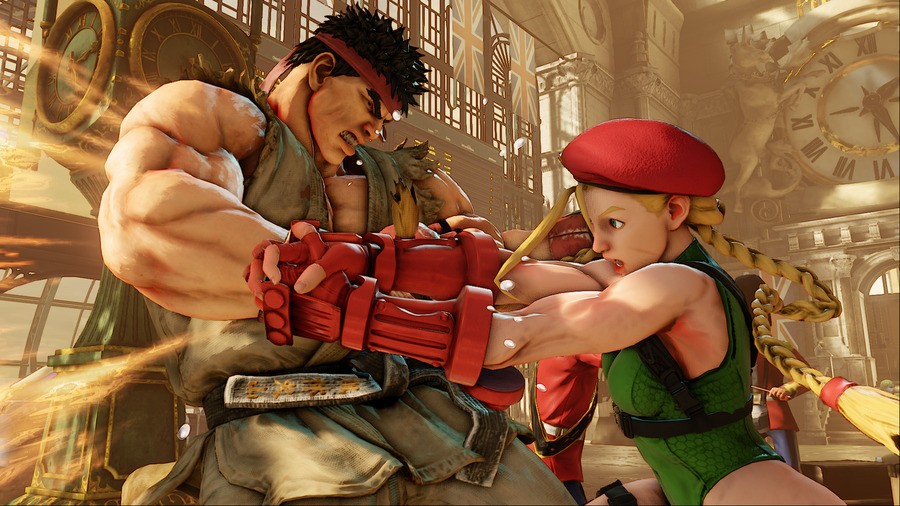
Street Fighter IV had a good run. Released in Japanese arcades in 2008 and home consoles in 2009, Capcom's flagship fighter received four paid iterations over six years, ended with a character roster of 44, and the Street Fighter finals of EVO 2015 were watched by very nearly a quarter of a million fans. This may well explain why Sony and Capcom have partnered for forthcoming PlayStation 4 console exclusive, Street Fighter V.
The game – scheduled for release in early 2016 – will be the latest creation in the long-standing series, and is also the first Street Fighter title to receive a large-scale beta test, which we've been lucky enough to spend time with.
On the surface, those with experience of fighting games – and Street Fighter in particular – will feel right at home with the beta; two fighters duke it out in one of several stages and the first to win two rounds wins the match. Naturally, Ryu is present, as is Chun Li, Cammy, and pantomime villain M. Bison. Fans of the Alpha series will recognize Nash – Charlie with his name internationally standardised – and Birdie, too. The art-style represents an iteration on Street Fighter IV's, with the action again rendered in 3D on a fixed 2D plane.
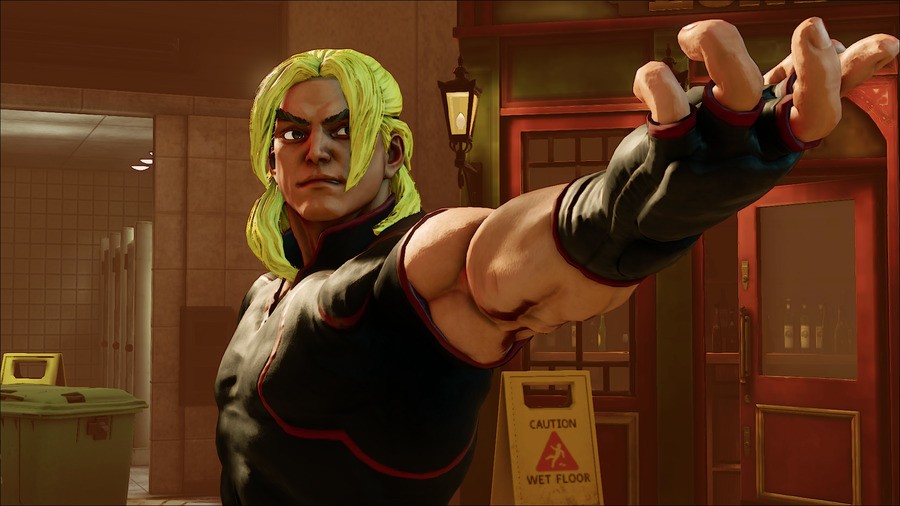
The beta's stripped-down gameplay cycle is minimal. You choose a character, land in training mode, and are randomly matched against others. Anybody in the world is fair game for the netcode-testing purpose of this beta, regardless of skill or location. Win, lose, or draw, after each match you are awarded a little XP, your chosen character may rank up, and from there it's back to training mode as the same fighter, awaiting another match. This time spent in training mode is a godsend, though, as the newly implemented mechanics are multi-faceted and nuanced, and therefore a little sparring goes a long way.
The fights are great fun, having a definite ebb and flow of momentum between combatants. As part of Capcom's drive to make fighting games more accessible to newcomers, gone are some of the trickier execution requirements, meaning that if you guess wrong at any point, you can expect to be punished by almost everybody – not just those who have put the hours, days, and weeks into training. This is great news for beginners, but also good news for veterans; more opponents doing more damage more often is a great way to up your game. Fights feel shorter and more action packed than before, which is perhaps a bid to make the game more spectator-friendly, or perhaps indicative of our collective reckless inexperience – time will tell.
The game retains Street Fighter's traditional 'crunchiness'. You feel it when you land a hit, well-defined audio cues let you know when you land a counter or your attack is blocked, and the general timing of knock-downs, throws, jump-ins, and block-strings feel just familiar enough to put returning players immediately back in the zone.
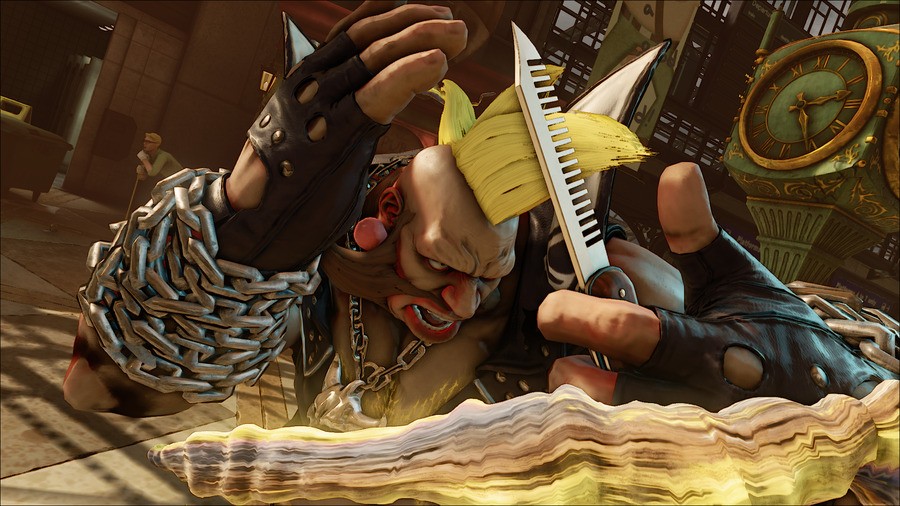
This isn't to say that initial fears that the game would be a little too like Street Fighter IV have come to pass, however. Street Fighter V stands on its own merits, its own systems, and its own gameplay, as a title that's shaping up fantastically.
Familiar to fighting game fans worldwide, Street Fighter V has an ex-gauge, a meter filled by performing special moves and landing hits on your opponent. In the game, this gauge is split into three stocks. Each stock can be traded to power up an 'ex-special move', performed by hitting two punches or two kicks on activation. Your standard double-hitting hadoukens and faster, safer spiral arrows are on offer here, as well as beefed up shoryukens, double knee presses, and the rest.
Of course, you can save the whole lot to blow on one enormous super-move, now named Critical Arts. Your choices include Cammy wall-diving into your opponent to kick them around the screen for over a third of their health bar, Birdie slamming a hapless victim into the ground repeatedly with his chains as the beefy punk has a bit of a skipping rope session, or M. Bison launching the fighter into the air – a brilliant anti-air option – before teleporting to deliver the ultimate psycho crusher, a move that's now missing from his standard arsenal.
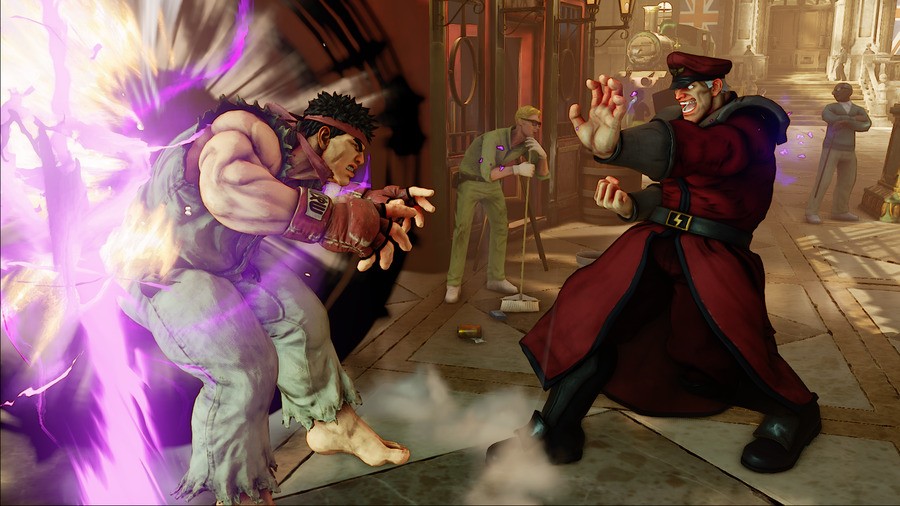
Ex-gauge gain is rapid, but not excessive; common play with moderate usage of ex-special moves should still see a player able to perform a Critical Art once every round given the opportunity, and failing that, the contents of your ex-gauge carries over between rounds.
On the whole, these Critical Arts look superb and have fantastic utility. Each character has multiple, easily achieved ways to land their Critical Art, and knowing your opponent is looking to perform such an attack adds a great deal of tension to your play. It's also entertaining – though risky – to use one of Nash's moves, his tragedy assault, to remove a stock of meter from such an opponent. A sure-fire way to annoy Birdie players.
However, the real showcase of these new mechanics is the V System, an array of tools and power-ups unique to each character, centred on the V-Gauge. This is a meter that you fill by successfully using V-Skills, or taking damage. You'll want to fill and subsequently trigger your V-Gauge as often as possible, as the options that it presents can be incredibly effective.
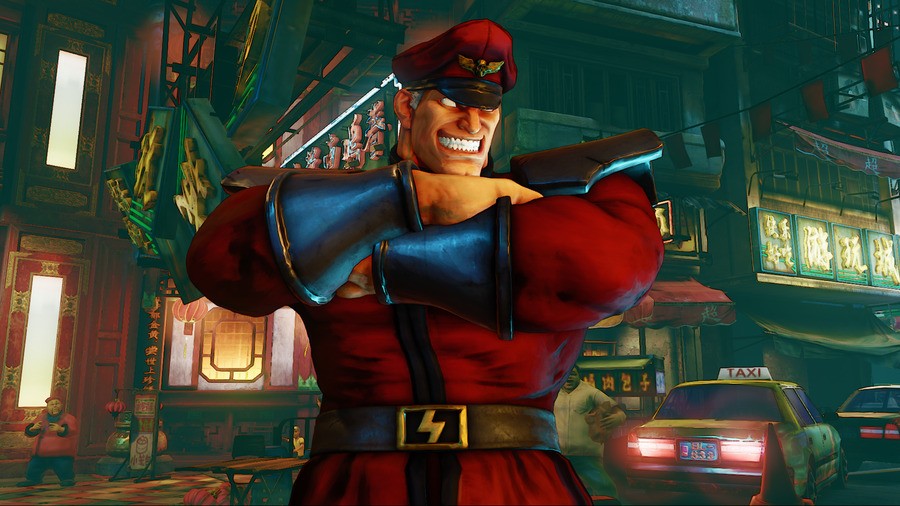
Each character has a flexible V-Skill move, activated by hitting medium punch and medium kick in unison. For example, Ryu gets a parry similar to a slowed down Street Fighter III parry, while Bison can snatch projectiles out of the air and absorb incoming attacks – he can even use this energy to send back a very fast fireball of his own. For her part, Cammy gets a heavily modified quick spin knuckle – actually quick this time around – that can pass through opponents to strike from the opposite direction.
What's more, when V-Trigger is activated, Cammy's special moves become lethally fast, multi-hitting beasts that pass straight through the opponent, resulting in increased combo ability and mix-up scope, whereas Chun Li's already fantastic normal attacks become multi-hitting. Ryu harnesses the power of lightning, augmenting his special moves and allowing him to charge his fireball into a guard-crushing trap, while changing his Critical Art into the denjin hadouken. Birdie, meanwhile, gets a plain old damage increase.
When M. Bison – stately, greying, and slow, replete with added menace – activates his V-Trigger, he channels psycho power, a mystical force that he controls which makes him exponentially more effective. Not only do his dashes become incredibly fast teleports, his special moves gain new properties, such as a devil's reverse that can teleport behind an opponent, or a double-hitting headstomp. Furthermore, his special moves can then be cancelled into ex-special moves, for some remarkably damaging combo opportunities.
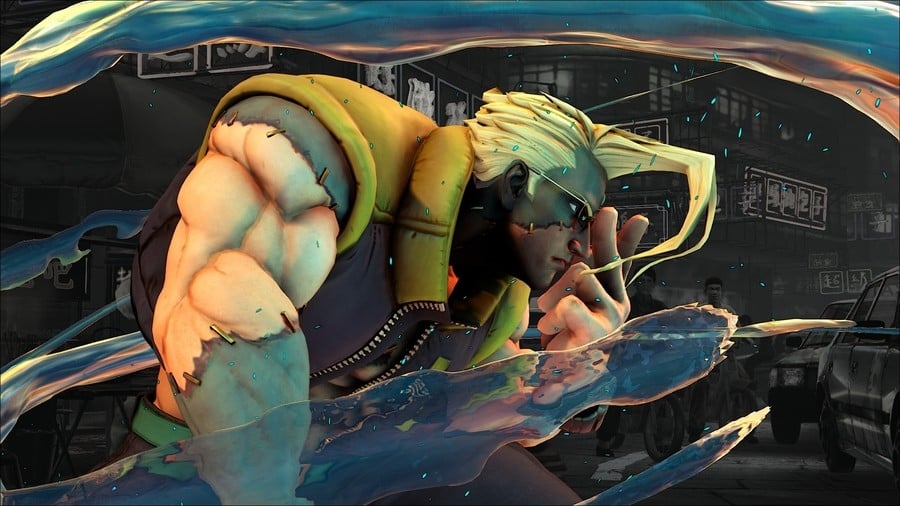
Finally, Nash has a slightly different V-Trigger in the form of a teleport. By holding down, back, or forward and hitting heavy punch and heavy kick, he can quickly teleport to various positions around his opponent. This provides great reset potential, as well as the chance to extend combos and the opportunity to make blocked moves safer in an emergency.
If that wasn't enough, all of the above V-Triggers have an important side-effect, as it's possible to cancel attacks into a V-Trigger activation. Players can use this technique to extend combos, similar to roman cancels and Street Fighter IV's focus attack dash cancelling. Looking for openings to activate V-Triggers in this way in order to land longer, harder-hitting combos will no doubt become a key component of Street Fighter V.
A core, stated aim of Street Fighter V was to create a fighter that was more welcoming to newcomers, and several design choices can be attributed to this. Essential single frame links that certain characters needed so that they could be used to their fullest potential are largely banished. V-Triggers and V-Skills, while unique to each character, are performed with a simple two-button input consistent across fighters, are fun to use, and are incredibly powerful.
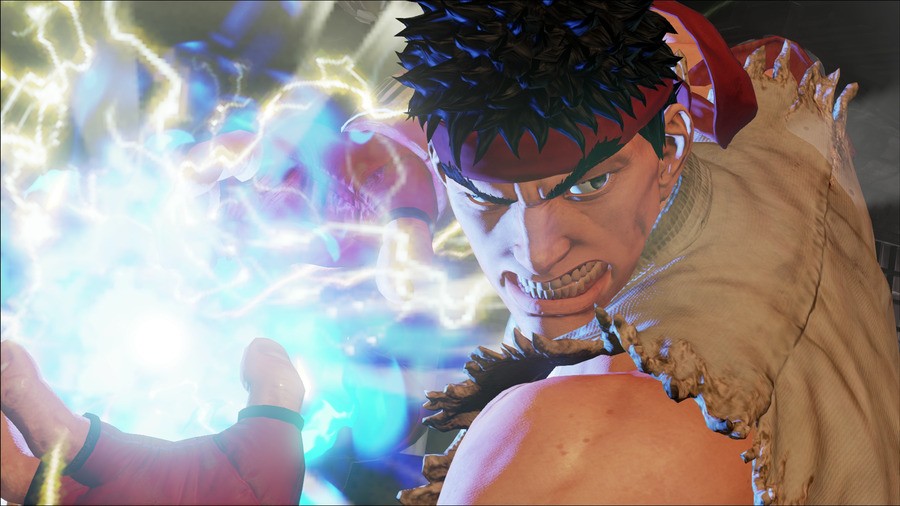
Furthermore, cross-ups – quickly attacking from behind to make blocking trickier – now come with a small message on-screen to let new players know what just happened and hint at why. Counter-hit opportunities now have a very clear audio and visual prompt, and some inputs for special moves appear to have been consigned to the history books, too. Gone are rapid-press activations such as Chun Li's lightning legs, and special move inputs that depend on the user quickly inputting a 360-degree motion.
It's easy for experienced fighting game players to forget the wall that they had to break through to get at the core of Street Fighter – the part where you're playing the game naturally, without having to actively recall each input, worrying whether it'll work or not. In lessening these obstacles to enjoyment, Capcom is clearly hoping to bring new faces to the table.
The point of this first beta trial was for Capcom to test its new netcode, and it's fair to say that so far, once in-game and actually paired with an opponent, it works well. The vast majority of our online matches were transatlantic affairs between the UK and USA, and while very slight lag was sometimes present, connections seemed far smoother and more enjoyable than any other fighting game we have tried over such distances. Obviously, some matches were better than others; when paired with one or two testers, the underlying connection seemed to struggle to keep our game clients in sync, but these were outlying cases, and certainly not indicative of the experience as a whole.

Many other testers have been forever alone in training mode, with the game's matchmaking system struggling to function. Luckily for us, this has not been the case since our first session – an incredibly welcome one hour training period with Nash – and when things were going better for us, fight requests were typically delivered every four or five minutes.
Aside from netplay, the community is bolstered by other, pleasing small touches. Players get a graph of their playstyle, which tracks the balance of a user's power, respect, and discipline. You're able to view the stats of your recent – and imminent – opponents, as well as their last few fight results. Replays of online matches are saved for a while, and can be viewed at leisure.
As for character roster balance, every available character seems to be viable. At this stage, it is nigh on impossible – not to mention futile – to speculate as to the relative strengths of each character, but it's important to stress that each combatant has techniques, moves, or raw power that seem truly dangerous. Over time, a bigger, clearer picture will develop, with some of the crew almost definitely emerging stronger, but that won't be fully appreciated until long after release.
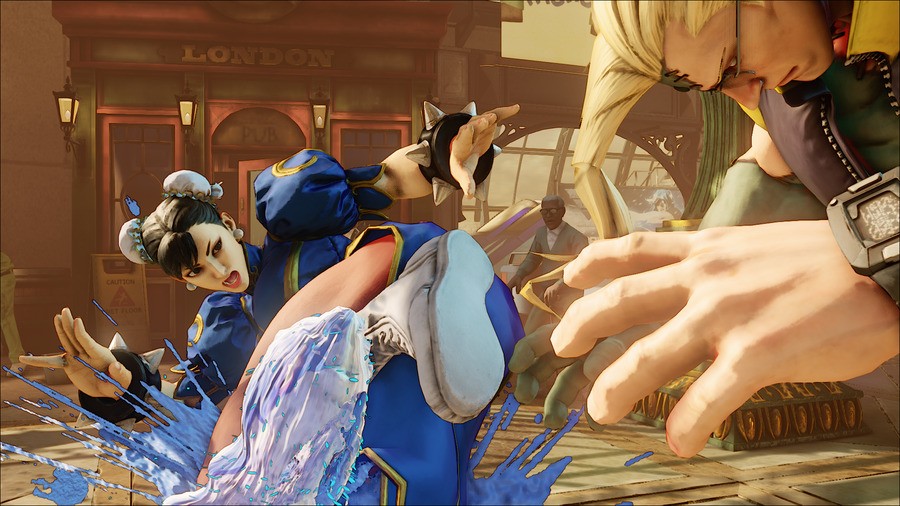
The beta hasn't been all plain sailing and fun, however. It's obviously unfair to punish a beta for technical issues, but it bears mentioning that those in the US who are considering pre-ordering purely for access to the beta should think carefully before making a decision. It takes a lot of time and luck to actually log in to the game at present, and you must do so to access anything beyond the title screen for this particular closed test. A lot of people were looking forward to this first taste of Capcom's latest, and there's a keen sense of frustration, which is understandable – especially for those that pre-ordered.
Fears that Street Fighter V is simply an even more enhanced remake of Street Fighter IV can be put to rest, if this beta is to be taken as indicative of the whole. The V System feels unique, powerful, and accessible, while providing a depth of play that is, most-likely, barely discovered at present. The included characters all feel strong and distinct, and fighting in Street Fighter V has the flow, precision, and responsiveness that we have come to expect from mainline entries in the franchise. What's more, the variation that the V System brings to each character makes the idea of the title launching with a relatively small roster of 16 far more palatable.
Of course, the graphical fidelity of the game is vastly improved upon the previous entries in the franchise. Aficionados of the genre will already have seen 60 frames-per-second footage on YouTube, but watching the game's visuals natively and uncompressed is doubly impressive. You'll find yourself idly drawn to the detail and smoothness of the characters and environments, be it Cammy's carefully choreographed posing, the gentle undulations of a stationary Bison's splendid new coat, or simply the contrast and lighting on the Hong Kong stage. It's worth noting, though, that we encountered some very noticeable framerate drops while in training mode on occasion, but not during player-versus-player matches on the other far busier stages, suggesting that this is a beta bug that will no doubt be squashed.
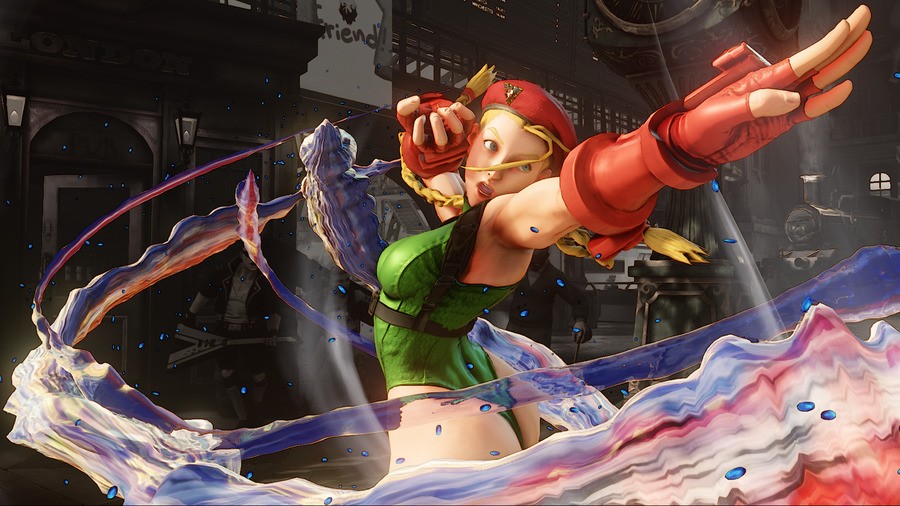
It's a sincere hope that the crippling sign-in troubles that currently come with accessing this beta are quickly eradicated, and more players are able to give this test a shot, as it very much deserves to be seen and experienced by many more people – especially those who have flirted with fighting games in the past and are tempted to try again.
Those people, and folk that occasionally get caught up in the hype of tournaments like EVO and the Capcom Pro Tour series, are well advised to pay close attention to Street Fighter V's development, as if Capcom's lofty aims are realized, they stand to uncover a deeply rewarding hobby indeed.
Have you been able to give the Street Fighter V beta a try yet? What are your impressions so far? Throw a fireball into the comments section below.





Comments 18
My Charlie is super good. Too bad I can only play a couple matches a day thanks to servers.
This is very interesting. I really liked reading this. The improvements made seem really good, and I like how even though special move notations are simplified, the characters still seem separate from each other. That also makes sound like it's more about how you use a move instead of trying to pull it off, which is a plus from me.
I'm glad this game is trying to appeal to newcomers. I know veterans may roll their heads at this game, but if you ask me, it's better this way.
Fantastic write -up
I want it! And I want Tekken. Seems unlikely either will release this year.
I haven't managed to get past the error messages yet. I usually don't even get to the title screen.
I have yet to fight an actual opponent I did the training room for an hour the other night but that's as far as I got. Will be picking this game up at launch for sure.
@Matroska If you get error 21007 that means the servers are currently full just keep trying and you will get in.
Awesome report, Steven. It's a shame that the beta's been so iffy, but as you say, it's better these things are sorted out now.
I got in about 20 minutes, connected to 1 online match that disconnected lol , didn't actually play online just found an opponent . Ah well, Capcom has said this beta doesn't count toward the 3 planned betas and will compensate participants in some way in the future so I guess it's win win
sounds too complicated
@DualWielding Its kind of gone that way since street fighter 2 championship edition.
I was never interested in the beta, I'm still trying to find the Time to play usf4. Good to hear the moves are easier to pull off, its horrible when a gap appears and you miss the frame to carry on a combo, let alone hit and miss combo sections like clockwise 360 followed by 3 punch buttons. So this will help peeps like me with good strategy but slower reactions.
I'm very impressed by how in-depth this article is. Most other gaming sites would just be like "Yeah, Ryu is there. Still has his fireball and dragonpunch. Cool."
I didn't think I'd comment, but thanks for the kind words, and thanks for reading a very, very long article.
Just give me Juri, and I'm sold.
@Aromaiden I'd love to see Juri make a comeback. She's definitely one of my most requested for a return alongside Adon and Rose.
@DerMeister Yeah I would love to see Rose also. I loved fighting as her, so it would be great to see her comeback. I never did get to try out Adon much so I don't know much about him, but the more characters the merrier.
@Aromaiden it'd be a younger Juri. Considering this takes place before SF4 supposedly, right after third strike.
@B3ND3R I think SF4 takes place before 3rd Strike. I remember some details like Ken having his kid grown up (He was just born in Ken's Super SF4 ending) and Akuma had some gray in his hair. Bison also doesn't appear, and he's here. The series timeline is pretty whack, honestly.
@DerMeister It's because of Street Fighter III that the timeline is messed up. Street Fighter III was meant to be a fresh start with a whole new group of fighters except for Ken and Ryu (since really they were the two main characters since SF). Well due to complaints about none of the other characters like Chun Li, Guile or even Bison coming back the decided to make SFIV more of a true sequel to SFII.
Show Comments
Leave A Comment
Hold on there, you need to login to post a comment...